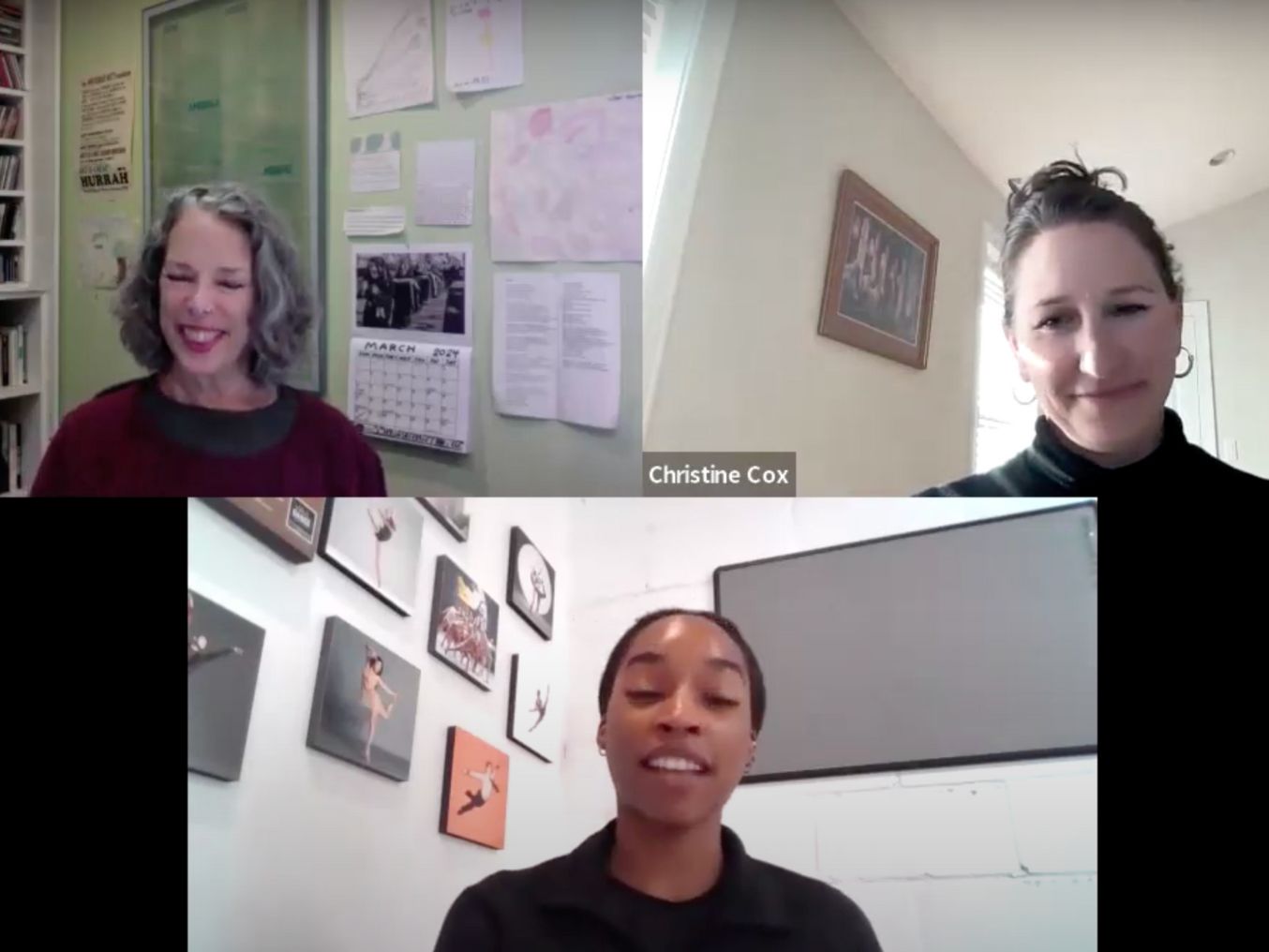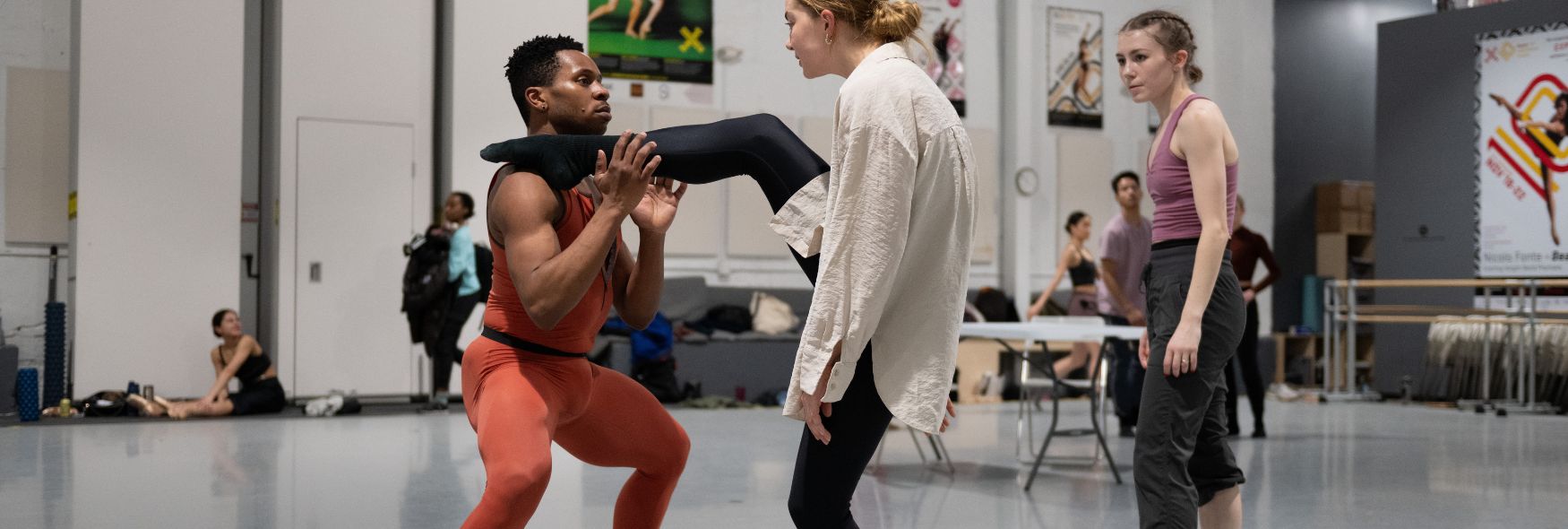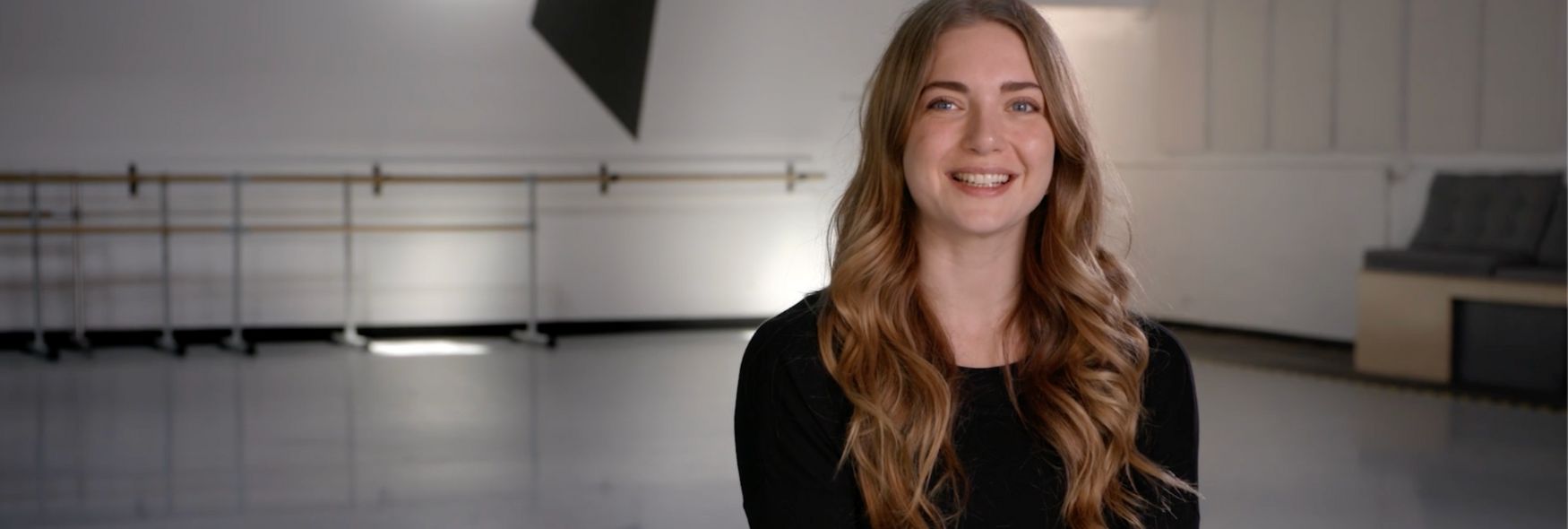BalletX dancers are hard at work today, continuing their rehearsals for Mozart’s Requiem. Within two days of rehearsals, they’ve made immense progress in advancing and solidifying the choreography. Standing at the front of the studio, Tara Keating holds a computer out and the dancers gather around her, moving their torsos or heads at certain moments to mark the movement, but otherwise fixing their gazes sharply at the video of Requiem recorded from over the summer. The women are all in pointe shoes, on which they test the limits of their balance and agility throughout the piece, and from which they articulate the unusual partner work. For a moment though, they are concentrated and still before they move back out into the space and step onto their shoes as effortlessly as though they’d always been attached to their bodies.
In the middle of Requiem, there is a duet between two men, and it is this section that Tara Keating focuses on when she puts her computer aside. The duet is as much an exploration of unusual movement vocabulary and unexpected partnering as it is an expression of deep but frenetic solemnity and longing. In the duet, one dancer puts his palm on the other’s head and supports his partner’s weight from this single point of contact. Yet this startling moment of contact breaks as quickly as it appeared, and the men move to a weight share on their shoulders and elbows. They encircle each other and shift from one startling partnership to the next, a quality that characterizes Requiem. It is a piece consisting of many such surprises and captivating moments, highlighted by eye-catching changes in levels and dramatic transitions from fast to slow.
Yet to no one’s surprise, the company members’ ability to dance with this kind of speed and suspension, all in the same piece, is equally matched by their chameleonic capability in performing a diverse array of choreography. In the span of one morning, after they’d rehearsed parts of Requiem and reviewed the complicated partner work in the piece, they switched over into rehearsing for Vivir, a work choreographed by Darrell Grand Moultrie this past spring. This upbeat and feisty piece has a completely different feel from the heavy, somber tone of Requiem. The movements are sharp and pronounced, with isolations of the hip, head or shoulders, and the dancers perform it with a glimmering speed. Tara Keating only rehearses part of the piece with them, since it is a full twenty-three minute work and the dancers have a half an hour before their lunch break.
Unlike Requiem, which starts as a unified collective, Vivir begins with solos that draw out the unique personalities of the dancers. Although each solo seems to be catered to the strengths of the individual company members, all the movements overlap in their punctuation and sultry attitude. One dancer in her solo kicks and extends her leg above her head but then balances for a breath-taking instant on that same foot that was above her head just a moment ago. A few phrases later, the piece slides into a jazzy duet that is luxurious and slow. Like Requiem, Vivir is a piece that requires multi-skilled artists in its demand for strength, speed, precision and poise within the span of a single eight-count phrase. Observing this company at work for just a few hours is confirmation of what has already been said many times, that these dancers at BalletX are truly masters of their craft in their ability to perform a multitude of genres and styles.
-Marion Kudla, Company Intern


